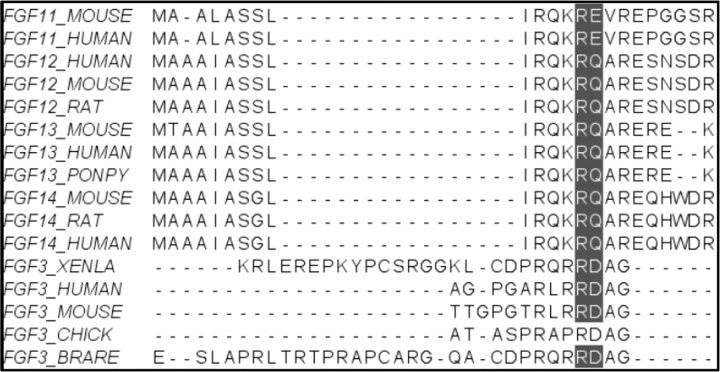Fig. 4.
FGF3 and other FGF family members that undergo proteolysis in their N-terminal region. Proteolysis of the N-terminal region of FGF3 is important for regulating its activity. FGF11 to 14 were also assigned high score N-terminal cleavage site predictions, although they do not have a leading signal peptide. Removing the signal peptides of FGF3 members allows alignment of the N-terminal proteolytic sites. The high conservation of the proteolytic site signatures in contrast to the variability of the flanking sequences, confirms the importance of the proteolytic processing that as in FGF3 may be involved in the regulation of protein activity.

